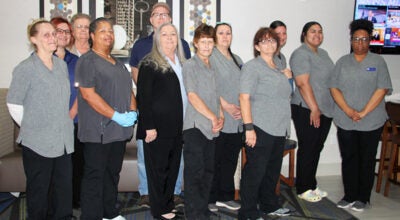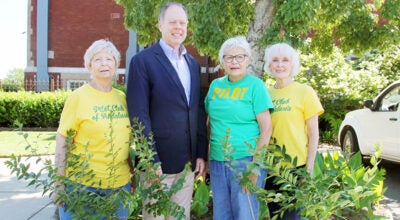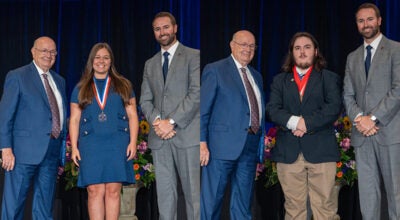Dogs help blind owners stay safe, guide
Published 12:00 am Friday, December 19, 2014
Day-to-day life continues despite being in the dark for two local people, thanks to the help of their four-legged assistants.
Wanda Scroggins and Dirk Price each has a form of visual impairment and each lives completely different, independent lives through the use of guide dogs.
Scroggins and leader dog Harley, a 5-year-old Golden Retriever from Leader Dogs for the Blind, have been paired since February 2011.
“We travel at least twice a month all over the world as graduate field representatives,” she said. “I do a lot of work for Lions Club International as a motivational speaker.”
With Harley’s help, Scroggins has been able to continue a normal life.
Recently, Scroggins visited Toronto, Canada, for a Lions Club International Convention and is scheduled to visit Washington state and Greenville, N.C.
“With this partnership, my whole world has opened up again for me when I thought I had no hope,” Scroggins said. “Now I’m giving hope and challenging others. It’s not bad; it’s a great life.”
Price’s assistant Nuri, a 2-year-old golden retriever/yellow lab, came from The Seeing Eye, and they have been paired for two years.
“They teach the dogs to work in the environment you live in,” Price said “You trust that he’s going to keep you safe. He walks where it’s safe for you to walk.
“If he comes to an edge, he stops,” he said. “He won’t run you into anything, and picks the path that is wide enough for the both of us.”
Price and Nuri live on a 240-acre farm with trails, a pond, cows and beehives.
“New places are a challenge,” he said. “If it’s a route that I do every day you don’t have to tell him a thing, he knows to go that way.”
Price said when following directions, Nuri knows how to find his way with commands like left, right and find the stairs.
Scroggins shared similar stories of Harley’s helpfulness when visiting new areas.
Scroggins said that leader dog Harley has saved her life at least three times in the past year, including keeping her from walking off the side of a hotel.
“There was a sidewalk that wrapped around a very ritzy hotel in New Mexico and it just dropped out with no barriers or anything,” Scroggins said. “So he knocked me backwards and refused to let me up. That was the most real experience I’ve ever had in my life.
“It actually happened on our third-year anniversary,” she said. “I feel that God had a plan in that one.”
Another instance of Harley protecting Scroggins was during the recent Andalusia parade. She said he went on high alert when a military vehicle in the parade scared him and he protected Scroggins from it.
“It’s wonderful to know these dogs can do that,” Scroggins said. “That means I have to trust my dog. That’s the hardest factor for any visually impaired person, is trusting that dog’s instinct. Even though you don’t see what they see, there’s something there 99 percent of the time.”
Scroggins said people talk to visually impaired individuals more because of the guide dogs because they’re interested.
“They don’t talk to you when you just have a white cane,” Scroggins said. “I’m a cane traveler and a dog traveler, but I’d much rather use my dog.”
Receiving a guide dog requires medical and mobility testing, and the genuine “need” for a guide dog.
“Everybody that wants a guide dog, doesn’t get a guide dog,” Scroggins said. “There’s more than 16,000 applications that go into 10 different schools across America, and less than 2,200 dogs are issued yearly as teams.”
“You have to be functioning,” she said. “These are not companion dogs, they’re service dogs. They’re used to keep you motivated and moving.”




